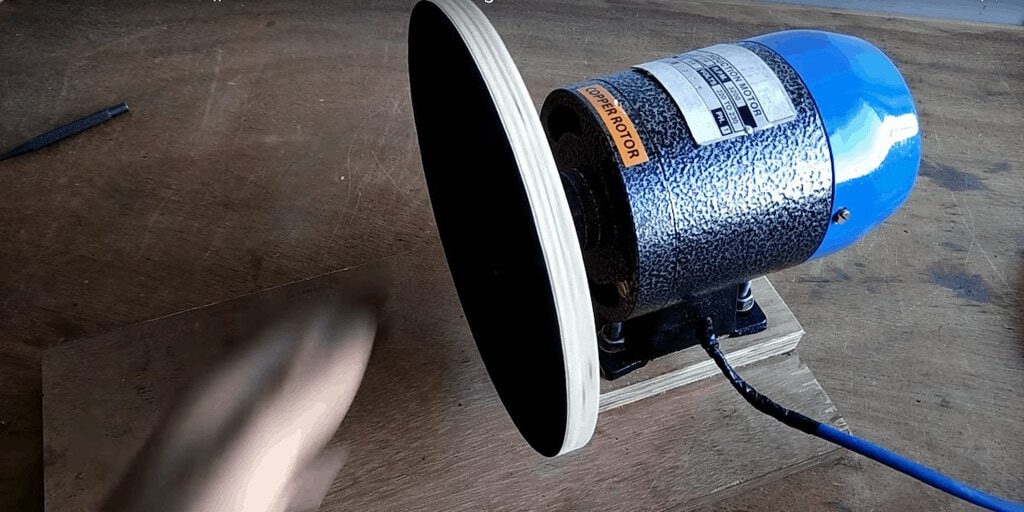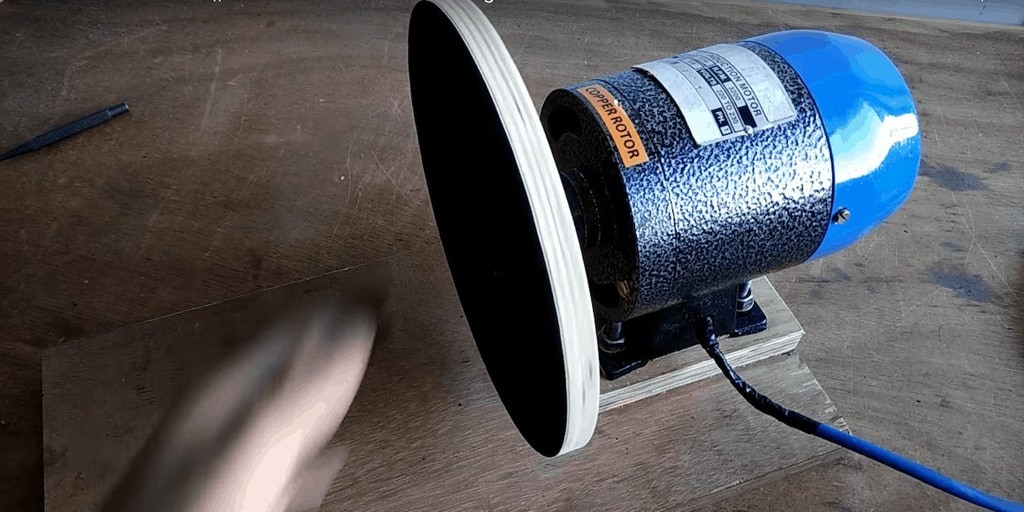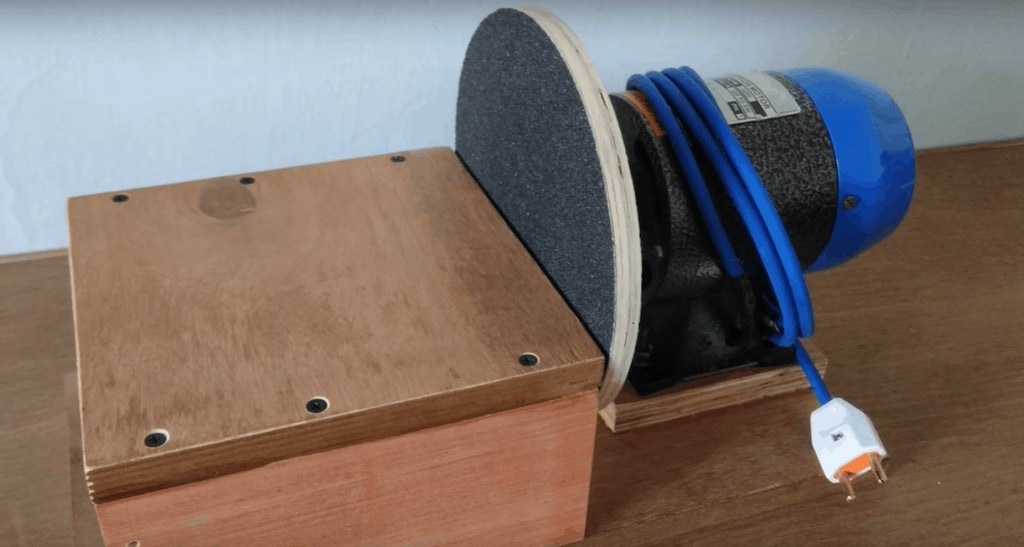A disc sander can be a beneficial tool in your workshop if you do a lot of shaping work with wood. If you work primarily with sandpaper by hand, you might find it challenging, at first, to switch to a disc sander. However, this tool can save you a lot of time with woodworking projects.
These bench sander reviews and buying guide will help you discover some of the best disc sander options on the market and give you the low-down on the most critical factors to look for in this tool.
Top 5 Picks for Best Disc Sander
WEN 6515T Disc and Belt Sander
The WEN disc sander also includes a belt, making it an affordable 2-in-1 tool. This sander is compact compared to other similar devices, but its heavy-duty base prevents it from moving while you work. You can tilt both the belt and disc up to 45 degrees to work comfortably and precisely.
Things we like:
- Includes a dust catcher for both the belt and disc to keep your workspace free from debris
- Disc spins up to 3,450 RPM, which is good for softwoods
- Heavy-duty base keeps the WEN sander in place on your workstation
Things we don’t like:
- No speed adjustment, so it might be too fast for hardwood and metal work
RIKON Power Tools Belt and Disc Sander
The RIKON disc and belt sander is a user-friendly tool that’s simple to get set up, put into action, and adjust as needed. You can tilt the belt at a 45-degree angle to meet the needs of your project. With its mostly alloy construction paired with a heavy, no-wobble base, this sander reduces vibration as you work.
Things we like:
- The RIKON sander runs with virtually no wobble, keeping it safely in place while you work
- Includes a 2-inch dust port to prevent debris from covering your work area
- Durable construction with a brushless induction motor and metal elements
Things we don’t like:
- The sander operates relatively loudly
- Higher in price than many similar units
Delta Disc Sander
If you’re looking solely for the best disc sander to meet your needs, you might opt for this one by Delta. It has a 12-inch disc to offer more surface area in less time than most 2-in-1 sanders can. This sander also has pre-drilled holes to keep it firmly mounted to your work area.
Things we like:
- Large 12-inch disc can get jobs done quickly
- Under-table dust collection allows you to attach a shop vacuum for easy cleanup
- An impressive 5-year warranty covers parts and labor
Things we don’t like:
- Sits at a higher budget than similar disc sanders
POWERTEC BD4600 Woodworking Belt Disc Sander
Another disc sander with an included belt sander, this POWERTEC tool offers a powerful 120 V induction motor for reliable and long-lasting operation. The 45-degree adjustable disc sanding table consists of an easy-to-read miter gauge for creating precise angles. You can easily switch between belts, too, using the quick-release function to reduce tension and remove the current belt.
Things we like:
- Larger belt and disc than many belt-disc sanders give users more surface area to work with
- Durable build and decent weight lend to the sander’s longevity
Things we don’t like:
- The dust catcher is very small, so it doesn’t hold much at one time
- Although changing the belt is easy, balancing the belt can be somewhat challenging
BUCKTOOL Disc and Belt Sander
The BUCKTOOL disc and belt sander includes an 8-inch disc and 36-inch belt to create an efficient work surface area. You can mount the sander to your workstation using pre-drilled holes. This sander also offers a relatively quiet operation with little vibration compared to similar machines.
Things we like:
- The belt sander tilts up to 90 degrees for creating shapes and angles
- Cast aluminum heavy-duty base reduces vibration to avoid movement
- Includes a safety switch with a key to prevent the machine from accidentally turning on
Things we don’t like:
- The belt can be challenging to remove and replace
What a Disc Sander Does and Why You Might Need One
A disc sander, sometimes called a bench sander, is usually a benchtop tool that clamps to a work area and allows you to sand wood quickly and efficiently, although some manufacturers also create handheld disc sanders. The sander uses a motor to rotate a sanding disc at high speed to get the job done much quicker than you could by using only sandpaper.
One of the most significant advantages of a disc sander is that it keeps both of your hands free to control the wood you’re working with. You can shift and rotate the wood as the tool sands it down to get the perfect shape and finish.
These tools are also incredibly fast compared to regular sandpaper. Although they might require a bit of a learning curve to get used to, disc sanders can cut your work time down significantly once you learn to use them properly.
The Difference Between a Belt Sander and Disc Sander
People often talk about belt sanders and disc sanders as the same tool, but you use them in different ways. Both of them have a similar purpose – to sand down wood using sandpaper – but you’ll use them differently when you work with wood.
A disc sander gets its name from the rounded disc of sandpaper the tool uses to sand wood. These sanders are stationary tools that clamp to a table to hold them in place while you move wood against it to sand it down, keeping both of your hands free to work with.
In contrast, a belt sander uses a belt of sandpaper. The design of this tool allows you to hold it while you work, which can help you complete precise sanding tasks. There are also belt sanders that can clamp to a work area for hands-free work.
Some sanders include both a belt and disc sander. This 2-in-1 setup could benefit you if you need to save space in the workspace and want a more affordable solution than buying both tools separately.
What to Look for in the Best Disc Sander
There are a few important features to consider before buying a disc sander:
- Disc size: Disc sanders typically have discs that range anywhere from 5 to 8 inches in diameter, but some are as large as 12 inches or more. You’ll need to consider the type of projects you’ll be using the tool for and how large the disc should be. More surface area means less time you’ll need to sand.
- Speed: The disc speed you need for your sander is important because different speeds are necessary for different types of wood. Hardwoods need lower speeds because the disc heats up quickly, while softwoods can work well with higher speeds. Some disc sanders have adjustable speeds to meet your needs better.
- Weight and durability: Although a heavy weight doesn’t always correlate to durability, the two often go hand in hand. Some of the best disc sander options are a bit on the heavier side (around 20 pounds or more) because of their more durable metal construction. A lightweight sander might be okay if you’re only looking to do quick, light-duty tasks, like sanding drywall or thin wood pieces, but bigger tasks and more consistent work might warrant a heavier, more durable machine.
Disc Sander FAQ
Q: How do you use a disc sander safely?
A: Disc sanders can be very dangerous if you don’t use them properly. It’s crucial to read the instruction manual before using the tool and always to wear safety goggles and gloves when you operate it. You should also remember never to force the wood into the disc; instead, let your hands gently guide it where it needs to go and allow the disc to do the work.
Q: How do you clean a disc sander?
A: Removing dust and debris from your disc sander can extend its life and prevent overheating. There are a few ways to do this, but one of the most common methods is to use recycled rubber or bunched-up plastic, like plastic bags or trash bags, to rub along the surface of the disc as it runs.
This video demonstrates how to use a piece of recycled rubber to clean your disc.
Q: What grit do I need for my disc sander?
A: The grit you choose depends on the work you do. For heavy sanding, lower grit, like 60, is a good option. For precise shaping work, you’ll generally want to choose a higher grit between 100 and 200.
Wrap Up
Although there are several excellent disc sanders on the market, the WEN 6515T Disc and Belt Sander is one of the most well-rounded and versatile. If you don’t need a belt sander, however, you might opt for the Delta Disc Sander, which offers a 12-inch disc for plenty of sanding surface area.
Hopefully, these bench sander reviews lead you to find the best disc sander for your needs. Remember to look at important features, like disc size, speed, and longevity, before deciding which one of these disc sanders is right for you. Are you looking to create a cutting board? Check out our guide, How to Make a Cutting Board That’s Sure to Turn Heads.



